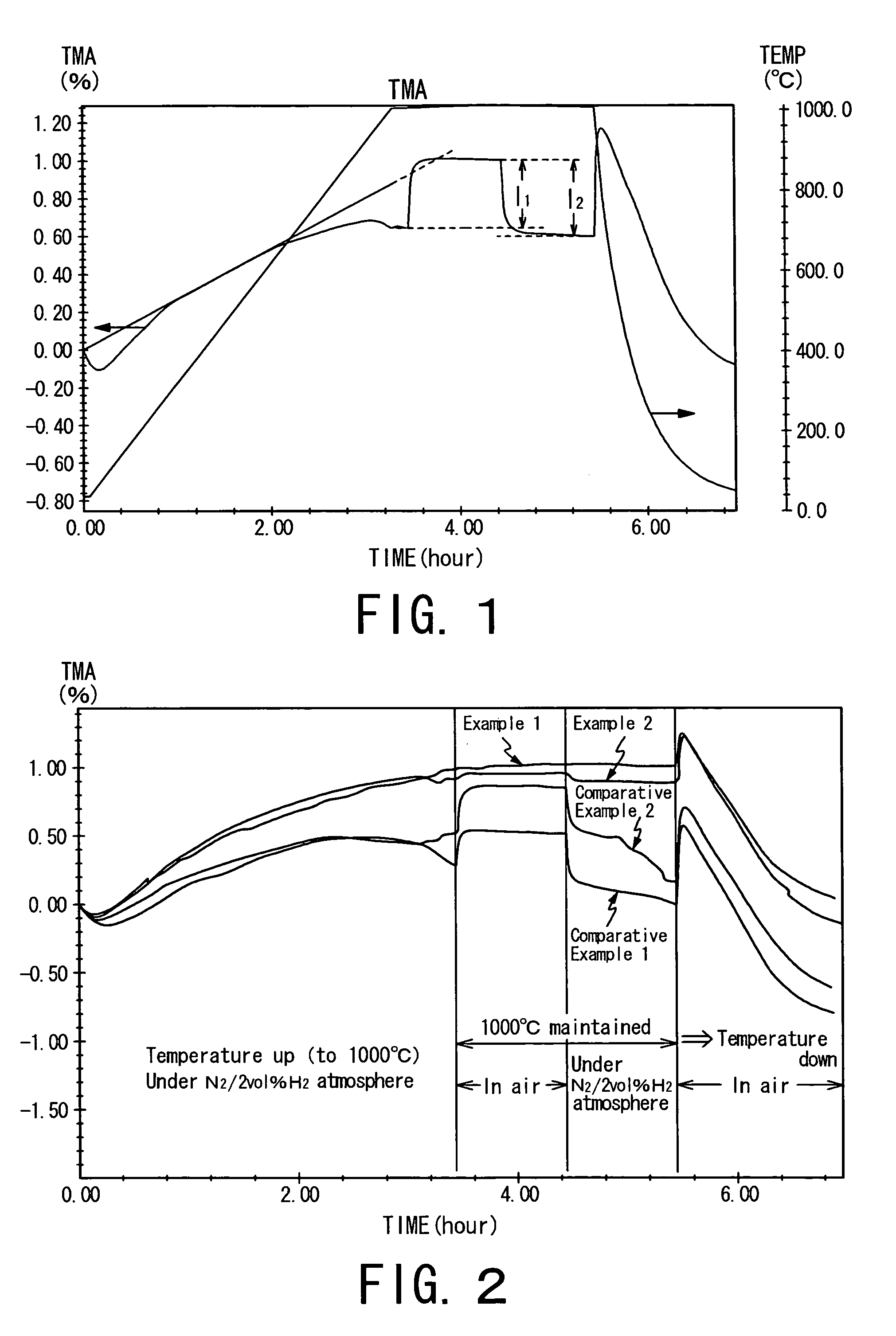Fuel electrode material, a fuel electrode, and a solid oxide fuel cell
a fuel electrode and solid oxide technology, applied in the manufacture of cell components, cell component details, final product manufacturing, etc., can solve the problems of hard to maintain a porous structure, performance degradation of the fuel electrode, volumetric expansion, etc., and achieve the effect of reducing the volume, stably maintaining power generation, and reducing the size of the fuel electrod
- Summary
- Abstract
- Description
- Claims
- Application Information
AI Technical Summary
Benefits of technology
Problems solved by technology
Method used
Image
Examples
example 1
[0082]First, a solution was prepared by dissolving 40 g of sodium hydroxide in granule form into 756 ml of distilled water, to which an aqueous solution with a 100 g / l concentration which was prepared by dissolving nickel, chloride 6 hydrate was added and then 0.4 ml of titanium tetrachloride (corresponding to 0.3 g of titanium oxide (IV)) was further added, and precipitate obtained therefrom was subjected to filtration cleaning and then dried at 105° C. This dried substance was then heat-treated at 800° C. and ground to synthesize a material powder containing 1 wt % of titanium oxide (IV) with respect to nickel oxide.
[0083]Subsequently, a 10Sc1CeSZ powder was weighed out to be 55 wt % with respect to nickel oxide in the material powder, and the material powder and the 10Sc1CeSZ powder were put into a polyethylene pot with zirconia balls and ethanol and mixed for 24 hours. The obtained slurry was then taken out from the pot and dried to obtain a fuel electrode material consistent wi...
example 2
[0085]Next, titanium oxide (IV) (mean particle size of 2 μm) and a 10Sc1CeSZ powder were weighed to be 1 wt % and 55 wt %, respectively, with respect to the nickel oxide powder to be used (mean particle size of 0.5 μm). Then, the nickel oxide powder and the titanium oxide (IV) were mixed for 30 minutes in a wet ball mill, to which a 10Sc1CeSZ powder was further added and mixed for 24 hours. The obtained slurry was then taken out from the ball mill and dried to obtain a fuel electrode material consistent with the Example 2.
[0086]Nickel oxide powder produced by SUMITOMO METAL MINING CO., LTD. and titanium oxide (IV) produced by KOJUNDO CHEMICAL LABORATORY CO., LTD. were used.
PUM
| Property | Measurement | Unit |
|---|---|---|
| temperatures | aaaaa | aaaaa |
| diameter | aaaaa | aaaaa |
| diameter | aaaaa | aaaaa |
Abstract
Description
Claims
Application Information
 Login to View More
Login to View More - R&D
- Intellectual Property
- Life Sciences
- Materials
- Tech Scout
- Unparalleled Data Quality
- Higher Quality Content
- 60% Fewer Hallucinations
Browse by: Latest US Patents, China's latest patents, Technical Efficacy Thesaurus, Application Domain, Technology Topic, Popular Technical Reports.
© 2025 PatSnap. All rights reserved.Legal|Privacy policy|Modern Slavery Act Transparency Statement|Sitemap|About US| Contact US: help@patsnap.com



